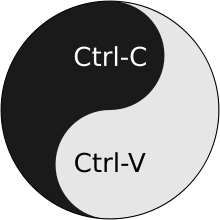Postsecular, like postmodern, is a title applied to phenomena in society that do not seem fit into an earlier paradigm and has thus been named post-something because it perhaps is not yet visible what comes next. It is an end of an era but also a shift towards another and has the academic world digging out all the blind spots of the earlier theories, suddenly noticing a variety of things that weren’t perceived before. The secularisation theories saw traditional institutionalised religion slowly disappearing: less people in churches, less belief in God and more non-Christians answering surveys. When the shift arrived this time, it was noted that religion is not disappearing. Secularisation was defined in less all-inclusive ways – or even as a minority phenomenon of the educated elite, as Peter Berger saw it (eg. Berger: 2002: p. 291–294.) – and new theories appeared. Only, now the question became ‘how is religion changing’ instead of ‘how is religion disappearing’.
Gray mentions 9/11 as an example of how religiosity has become very visible in the political sphere. Another, less grim, example is the various new religious movements that seek to establish a presence in politics through challenging the hegemony of traditional churches in a very peculiar way. I am referring especially to the Pastafarians in Europe and the US, the Kopimists in Sweden, and the Satanists in Oklahoma. These groups have very different religious views, but what they have in common is that they were born after the World Wars and have received some attention in the media due to their critique of the social definition of religion. I do not want to entirely omit all the pagan and other movements that have a similar agenda, but what I see as a connection between these three examples are their recent public campaigns seeking legitimation through invoking laws on religious equality.
Whether you are a Pastafarian demanding to wear a colander for your driver’s license or wearing it while taking your oath of office, a Kopimist seeking to register your religious community sacralizing file sharing on the Internet, or a Satanist wishing to publicly announce the love of Baphomet or to have your kids in school taught the Satanist way, the officials and courts of several countries have had to deal with your religious interpretations. Making claims for religious equality while maintaining close connections between the state and the Christian Churches has long been a point of cultural critique, especially in Europe (Eg. Martin: 2010). These movements, mentioned above, have put this message into action. For instance, Pastafarianism was born as a critique of the teaching of intelligent design in schools in Kansas. These movements have pretty much everything imaginable it takes to be a religion: holy books such as The Satanic Bible or the Gospel of the Flying Spaghetti Monster; rituals and holy days such as the sharing of files for Kopimists, a Kopimist wedding, Satanic baptism, wedding and funeral, Pastafarian Talk Like a Pirate Day and Ramedan; and of course religious symbols.
Because religions are defined in books of law and scholars of religion have found many ways to classify religion (eg. Ninian Smart’s Seven Dimensions of Religion) – none of which is explicit enough to include everything ‘commonly considered as religious’ and to exclude everything ‘not commonly considered as religious’ – these definitions can be used by the people to create their own sets of belief systems, to venerate their ideals, and to celebrate worldviews separate from the institutionalised churches that seem to have been the main focus of many theorists of religion. This focus on a specific type of religion was indeed one of the factors which gave rise to the secularisation theories.
Now, one may argue that some of the movements mentioned above have been created to celebrate secularisation and rationalisation of the world and merely to mock religiosity. However, it is not uncommon for such a ‘parody’ or critique to become more than just a joke. The Pastafarians in Poland and Finland have sought to be registered as a religious community. Both attempts, so far, having been declined. However, the Polish Pastafarians have had some more positive rulings from the Polish courts on the way, and both groups keep on fighting for recognition. The Kopimist community is registered as a religious community in Sweden, and the Satanists were organised as The Church of Satan already in the 1960’s. I believe the level of commitment has to be strong to some extent for a community to seek an official status as a religious community and to apply for bureaucratic legitimacy for their movement.
I am hesitant to use terms such as ‘serious’ or ‘meaningful’ in this context because of their vague connotations as definitive adjectives for religious practice. What is ‘serious’ or ‘meaningful’ religiosity? Is belonging without believing ‘meaningful’ and how does it differ from, for example, Pastafarian belonging? Is the Jewish holiday of Purim ‘serious’? Does the carnival atmosphere of it make Judaism less of a religion? I, myself, have been studying Discordianism, which is a very interesting example of how a group with critical or satirical origins can create profoundly life changing ideas, which could be viewed as religious or spiritual for even the creators of the movement (Mäkelä & Petsche: 2013).
No matter how we classify the movements stated above, their claims for religious rights within society (even a community of Finnish Discordians have their registration application on it’s way) show a certain meaning behind the rhetorics of religious equality. As Gray mentions in the podcast, postsecularism is in many ways about dealing with everyone: the religious, the atheists, the agnostics, and all the religious identities in between. It is not about trying to force religious speech into politics or trying to force it out of the public domain, like the secular discourse in many ways tried, it is about dealing with the fact that now we know religion is not disappearing.
References
Peter Berger: ‘Secularization and De-Secularization’ in Religions in the Modern World, ed. Linda Woodhead. 2002. Routledge, London.
Craig Martin: Masking Hegemony. 2010. Equinox, London.
Ninian Smart: The World’s Religions. 1989. Cambridge University Press, Cambridge.
Mäkelä & Petsche: ‘Serious Parody: Discordianism as Liquid Religion’ in Culture and Religion Journal Vol.14 Issue 4. 2013. Taylor & Francis Group.






